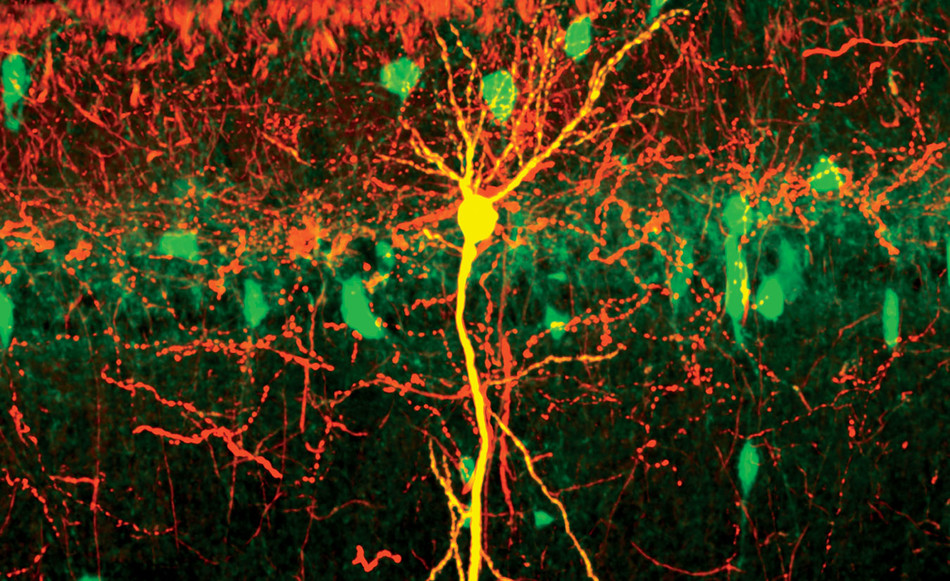One of the greatest mysteries in neuroscience is how groups of brain cells work together to form and maintain memories.
Now a team of Columbia neuroscientists led by Attila Losonczy of the Zuckerman Institute has achieved a breakthrough in this area, capturing how brain cells in mice perform computations as the animals navigate the world. The researchers accomplished this using novel brain-imaging and analytic methods they developed in collaboration with biologists in the laboratory of fellow Zuckerman Institute neuroscientist Franck Polleux, as well as with scientists at Imperial College London, the Sainsbury Wellcome Centre at University College London, and the Institute of Experimental Medicine in Budapest. Their techniques enabled them to observe interactions between brain cells in the hippocampus, which is where long-term memories are created, as mice explored new environments and formed memories about the places they visited.
Among the researchers’ discoveries is that the process of memory formation is a more boisterous activity than previously known. They found that when neurons called place cells, which are involved in encoding information about our physical surroundings, are first stimulated, many other neurons in their vicinity begin to vigorously converse, creating a “massive reconfiguration” of nearby circuitry. The researchers speculate that such group chats serve to amplify new mental images and store them away for safekeeping.
“Scientists have known for decades that individual place cells respond to specific locations, helping the brain create maps of the environment,” says Tristan Geiller, a postdoctoral researcher in Losonczy’s lab and the first author of the study, which appears in Nature. “But little has been known about how the cells talk to other cells to perform the mental computations that encode these memories.”
In another recent study, members of Losonczy’s lab discovered that new memories are consolidated in the hippocampus gradually, over a period of twenty-four hours or more, and that periods of physical rest are essential for the brain to complete the job.
Losonczy says that his group’s research could eventually have clinical implications. “A better understanding of how the brain creates its mental maps of the world could help inform research into how memory is disrupted in disorders such as schizophrenia and Alzheimer’s disease,” he says. “This can in turn help guide experiments testing potential therapies for memory-related symptoms of these ailments.”



